


’s-Graveland can be seen as a special area from both a cultural and a landscape architectural viewpoint. It is a unique exploitation from the seventeenth century. During the exploitation period the strip was dug off and divided into 27 equal parcels. Within this rational parcellation, a coherent sequence of estates of exceptional beauty has developed. Berestein lies on the Beresteinseweg and the Gooise Vaart and borders on the north side with the Gooilust estate. The old cemetery exists as an open square space enclosed by forest. Exactly in the middle there is a double row of lime trees. The entrance lies at the beginning of this lane. On the north there is a big open space, the former cherry orchard, currently used as a meadow. To the east lies the Corverslaan, an unpaved road with beech trees.
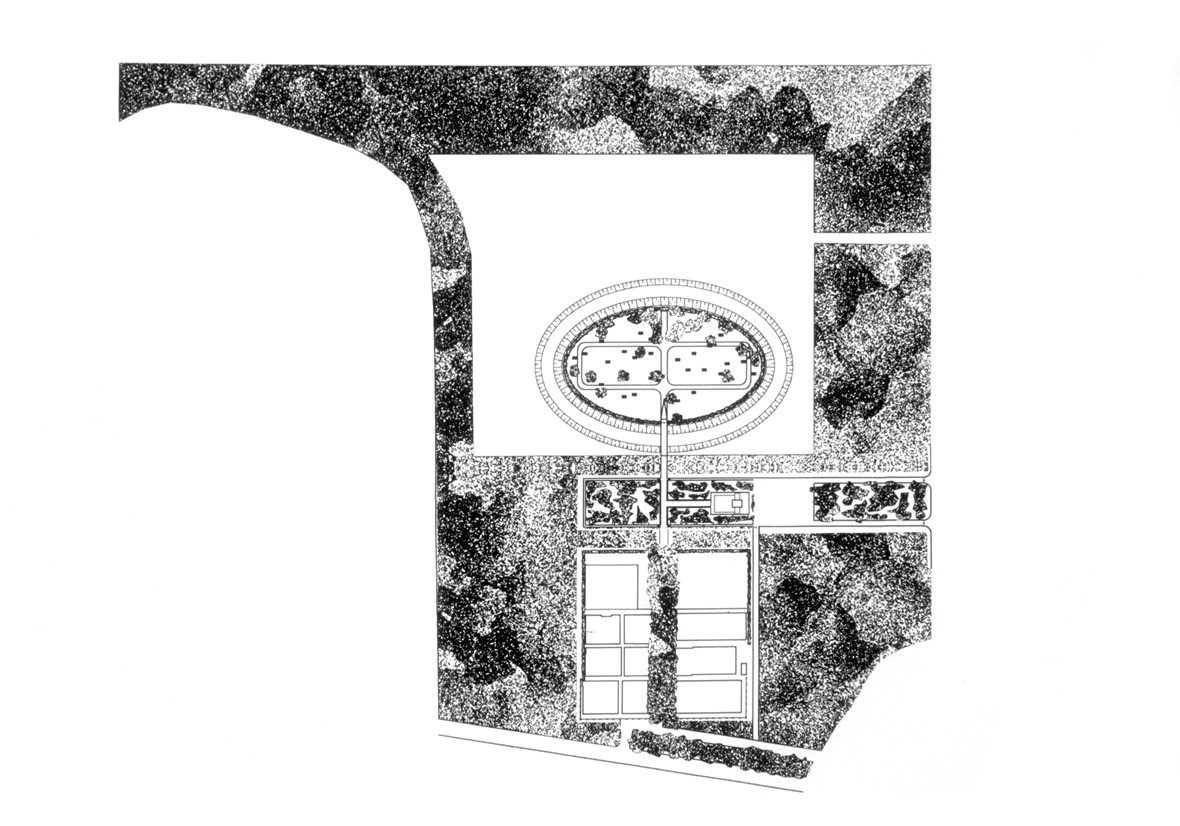
The design of the extension of the cemetery is based on using and intensifying the spatial situation. The old cemetery lies as an open room in the forest; the new part lies as a grown over island in the open space. The chapel is situated in the forest as a hidden treasure. The main path, which is extended to the new cemetery, forms the spine of the project. The new part has an oval shape and lies 1.5 meter higher than the surrounding meadow. Around the new cemetery a beech hedge is planted which will reach the height of 1.5 meter.
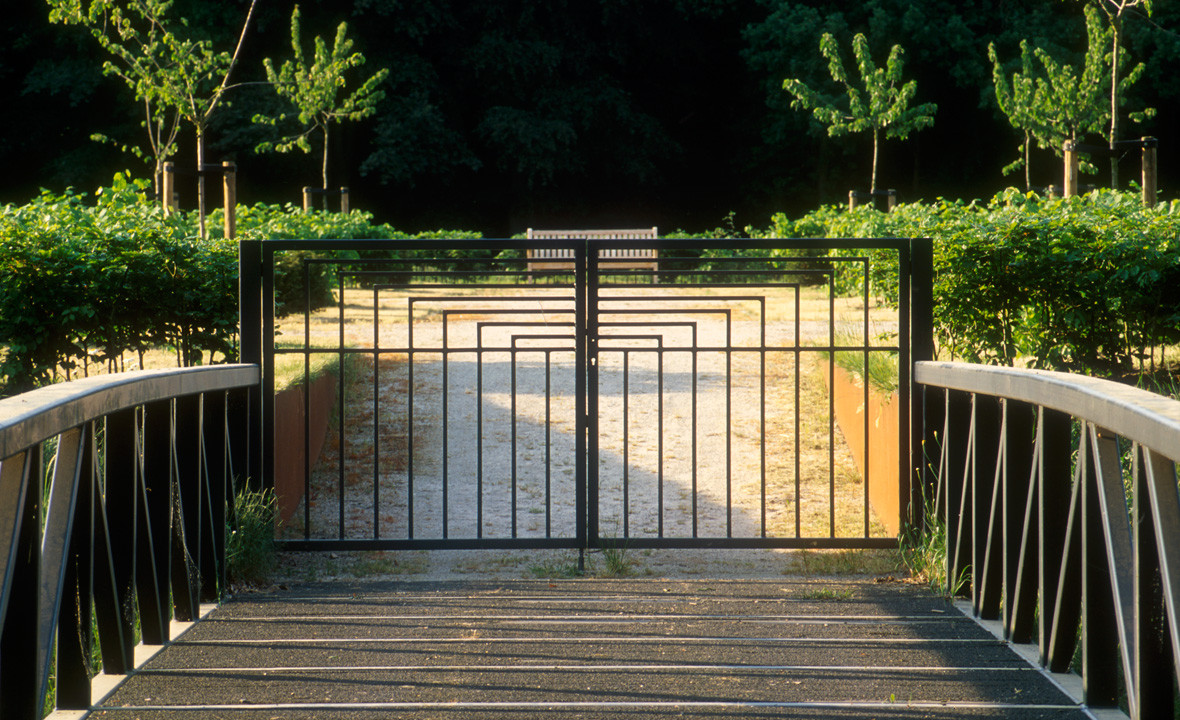
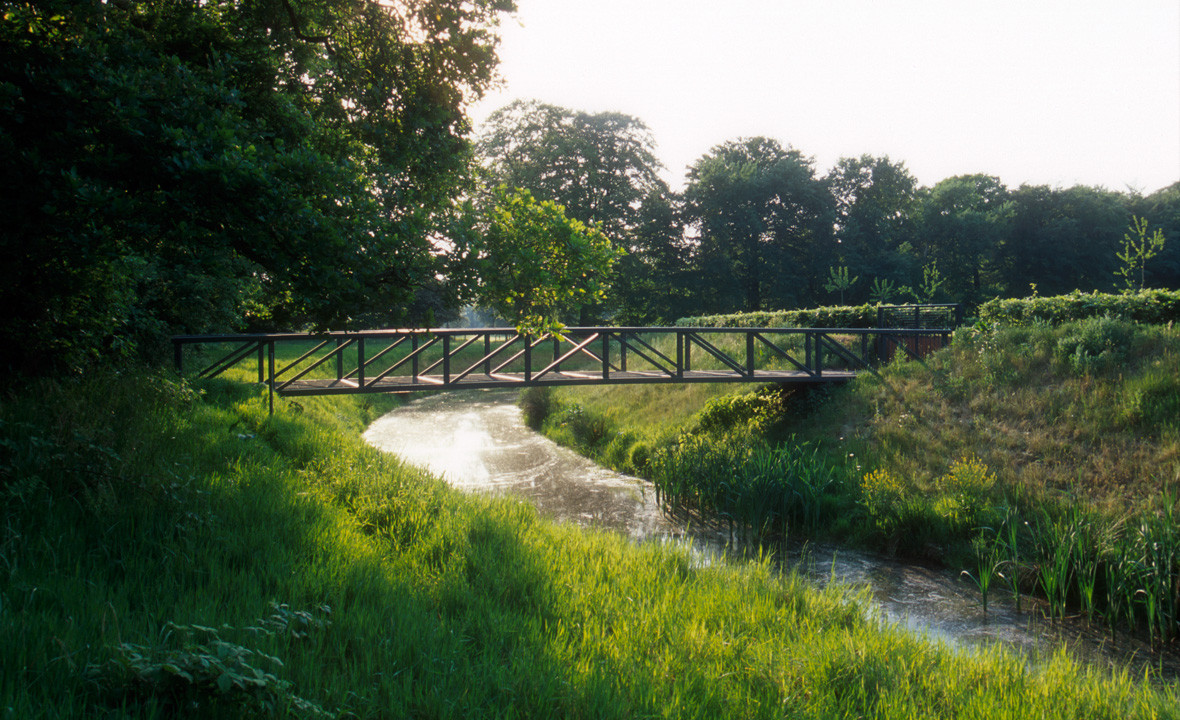
The cemetery itself exists of a grid of graves in the grass. The space is arranged by cherry trees and 6m high-sculpted lime tree blocks, which are placed separate from each other. Using 1m high-sculpted yew tree blocks makes an arrangement on a lower level. The grass on the cemetery is cut very short. Outside the cemetery the landscape comprises of rough grass planting.
The form of chapel can be simply identified by its rectangular shape and curved roof. The chapel rises above ground level and has the ground floor extending beyond the building giving the appearance that it is floating. The front and back facades are closed. The other two sides of the facade are made of glass, which gives the experience that you are sitting within the forest. The trees that almost reach the building enhance this feeling. The planting is composed of original forest planting; oak trees, birch trees, acacia trees and rowan trees. The planting directly surrounding the chapel is differentiated with ferns.
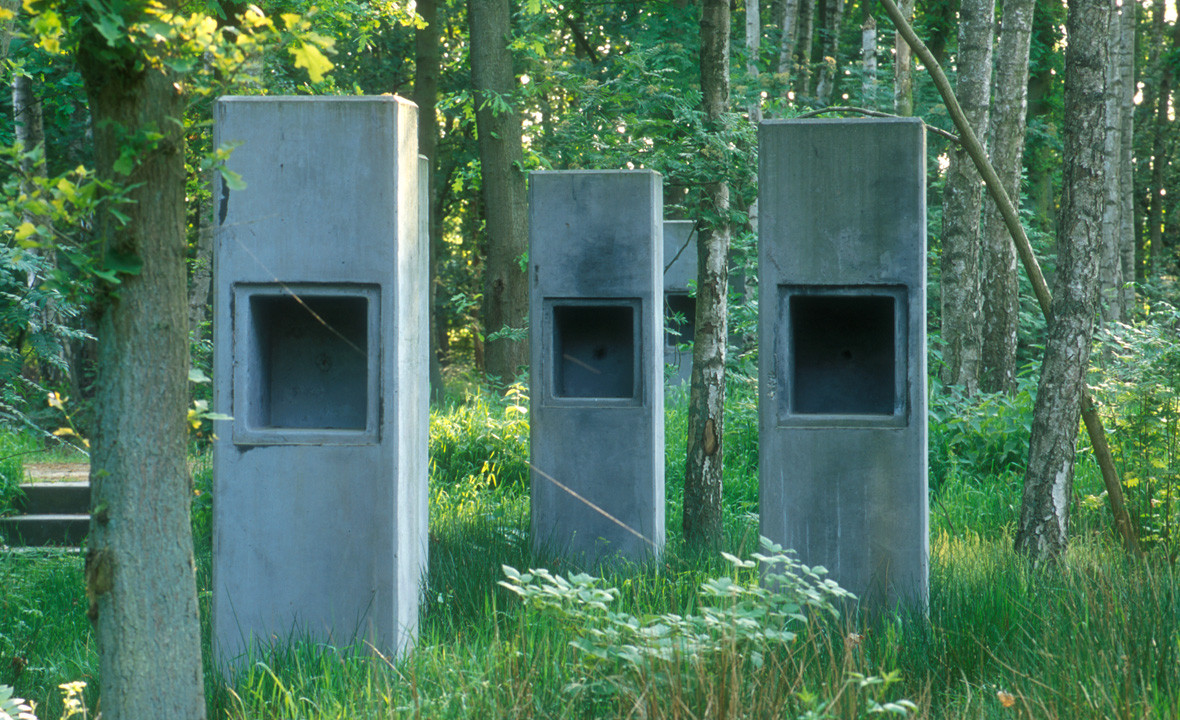
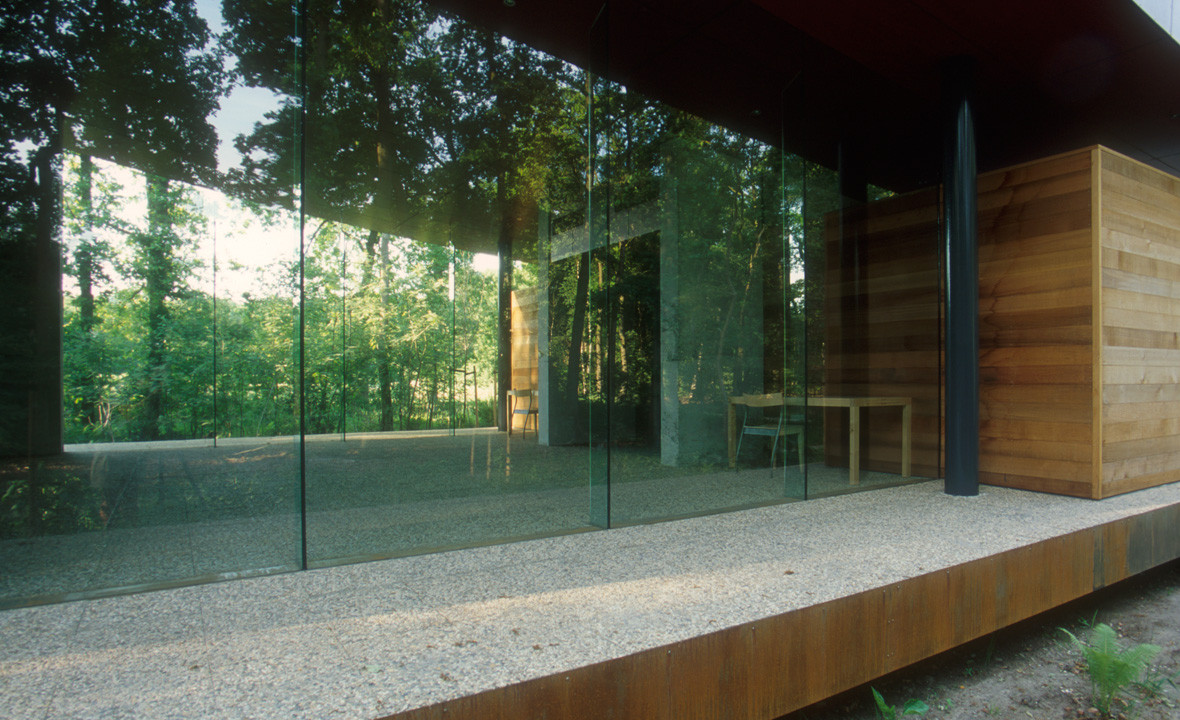
The chapel can be reached by funeral processions from the Corverslaan and by pedestrians via the main path or via a new path on the east side of the cemetery. From the front square a narrow path goes as a loop through the forest and crosses the main path. Along this narrow path stand concrete urn columns.
| Location. | ’s-Graveland, Netherlands |
|---|---|
| Assignment | Extension of cemetery |
| Size | 5 hectare |
| Design | 1996 |
| Construction | 1997 – 1999 |
| Status | Realised |
| Client | Municipality of ’s-Graveland |
| In collaboration with | Jan-Ton Stork |